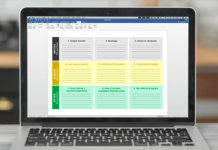The United States is home to 24 million small businesses that drive 54% of all US sales. Yet, often times small businesses lack the marketing capability and expertise of larger corporations. Marketing Strategy for Small- to Medium-sized Manufacturers: A practical Guide for Generating Growth, Profit, and Sales by Charles Frances addresses the fact that “many [small businesses] do not follow generally accepted basic business practices” and that “their approach to pursuing growth strategies – a.k.a. Shotgun marketing – is akin to ready aim shoot.” Thus, our goal is to not only help small businesses create a new email marketing campaign but to create a campaign that is tailored to their specific needs and customers.
When developing an email marketing campaign it is not only important to strategically plan the content of emails but it is also critical that businesses spend time planning when and how frequently emails will be sent to customers. Emails should be sent frequently enough to remind customers of the services and products but not too frequently that customers become frustrated and mark the messages as spam. According to a survey done by TechnologyAdvice, 45.8% of individuals surveyed stated that receiving marketing emails too frequently was the leading reason why they mark marketing emails as spam. Therefore, sending too many emails can be just as detrimental to a business as not sending enough.
Just as customers are all unique in their interests and buying habits, they also all have different relationships with your business. For example people fall into a variety of categories including potential customers, new customers, established customers, or lapsed customers. Therefore, email campaigns should be designed to take into account where individuals are in their customer lifecycle. Aligning an email marketing campaign with customer lifecycle data allows a business to send the most relevant emails to the right customers, therefore grabbing customers’ attention and encouraging them to buy.
Here is a general guide for sending marketing emails:
After Getting a Potential Customer’s Email Address
When potential customers initially sign up for a mailing list, businesses should immediately send them an email thanking them for their interest in the company and also providing them an incentive to make the initial purchase. The incentive could be a discount, free shipping, or a complementary item. However, make sure to give the incentive is only valid for a limited time, for example 2 weeks to a month, so that potential customers are encouraged to act quickly and buy.
After the First Purchase
Once a customer has made an initial purchase begin sending them an email series (comprised of 1-3 emails) that introduces the customer to your business. These emails can depict the history of your business, your mission statement, a survey to rate their initial experience or purchase, and finally include a second promotion to encourage a second purchase.
Abandoned Cart/Abandoned Search
If a customer is browsing your website and places a few items in their cart but never checks-out, send him an email to remind him of these unpurchased items. To encourage the customer to purchase the items in his cart offer free shipping or an additional 10% off. Sometimes customers just need a little extra push or reminder to complete the transaction. Similarly, email customers who have been looking at items on your webpage but have not put them in a cart or completed a transaction. Emails for abandoned searches can include advertisements for items that they were browsing or related items. However, come up with criteria for an “abandoned search.” The criteria can be based on the number of times a customer visits the webpage, a specific item, or category. Creating a criteria or benchmark for an “abandoned search” will help eliminate unnecessarily emailing people who only visited the website once or who were not seriously looking for items.
Birthday Emails
When customers sign up for the mailing list or create an account with your company ask for their birthday or birthday month. Therefore, on their birthday or birthday month you can wish them a happy birthday; thus strengthening the customer/vendor relationship. In a birthday email include a discount or a complimentary birthday gift as an incentive to come into your store and shop. Birthday emails have proven to be one of the most effective types of marketing emails. According to Experian, birthday emails experience a 481% higher transaction rate than promotional emails while also maintaining a 342% higher revenue per email than promotional emails.
Promotional Emails
Notify customers in advance of sales like a Memorial Day sale or Black Friday. Giving customers advanced notice allows them to plan ahead and also keep your store in mind while they are shopping.
Appointment or Order Reminders
If your business schedules appointments, such as a hair salon or doctor’s office, send clients email reminders before upcoming appointments or reminders to schedule future appointments. People will appreciate your proactive approach and organization. Reminder emails also encourage customers to continue to use your services by scheduling future appointments. Similarly, if you sell items that need to be restocked, like diapers or vitamins, email customers before their supply runs out to encourage them to reorder the products. If a person orders a 30 day supply of diapers, send an email around day 20 to remind her to place an order for the upcoming month. This reminds customers to order from your business and not a competitor.
Newsletter or Monthly Email
Let your customers know what your business has been up to while also keeping your business fresh in their minds. Newsletters are a great way to connect with customers while also sharing valuable information with them. However, if you are going to start a newsletter adhere to a schedule. Avoid sending out newsletters sporadically because it fails to consistently remind people of your company, shows a lack of organization, and people will be less likely to read them.
When developing content for a newsletter consider including:
- FAQ section: Include a section of commonly asked questions about the business, its work, or its products. An FAQ section will help inform subscribers about the business while answering any common questions or concerns that they might have had.
- Employee or customer spotlight: Engage with employees and customers by highlighting their exceptional work or contributions to the company.
- Success stories: Let subscribers hear from people who have had a great experience with the business’s products or services. Their positive experience can influence other individual to use your services.
- Dates of upcoming events: Keep customers informed about events and special offers or sales.
Emails and newsletters should always include an unsubscribe button. The CAN-SPAM Act, which regulates and provides rules for commercial emailing, gives recipients the right to request that a business stops emailing them. If an individual opts out of an email list, the business must honor that request within 10 business days. Typically, unsubscribe buttons are placed at the very bottom of emails that a company sends out. Giving customers the option to unsubscribe allows them to feel in control of the content they are receiving and to easily opt out if they no longer want to receive emails.
Win-Back Emails for Lapsed Customers
Keep a close eye on customers’ purchasing histories to avoid losing customers. Look for customers who have not made a purchase in the last 35 days. Email them on the 36th day and encourage them to make a purchase. Include a discount or other incentive to entice customers to re-engage with your business. Customers who defect from a business are not likely to engage with that business in the future; therefore, encourage customers to begin making purchases again before they completely sever company ties. It is important to retain customers because most of a company’s revenue comes from established clientele, not new customers. According to Rejoiner typically, 80% of a company’s revenue is generated by just 20% of their customer base. Repeat customers tend to spend more than new customers and are more financially beneficial to a company. Therefore, by increasing customer retention efforts a company will likely see an increase in profits.
Conclusion
Email marketing relies on maintaining a balance between emailing customers enough to encourage them to engage with a business but not too much that they become annoyed. Customers should only receive emails that are relevant to their customer lifecycle position, purchasing habits, and demographics. Tailoring email marketing campaigns to a customer’s lifecycle is something that large companies like American Eagle and Amazon already do. Try scrolling through your email and look at what triggered large and established companies to send emails. You’ll notice that most companies follow a very similar formula as described above. Don’t allow your business to fall behind the competition because you lack an email marketing plan. Reaching the correct customers at the correct time is just as important as an email’s content.
——
Kolau is the easiest way to market your small business. Request early access and start owning your small business online presence today. No marketing knowledge needed. No agencies required. Now you know, now you can.
Be sure to subscribe to our blog for more articles like this!
















